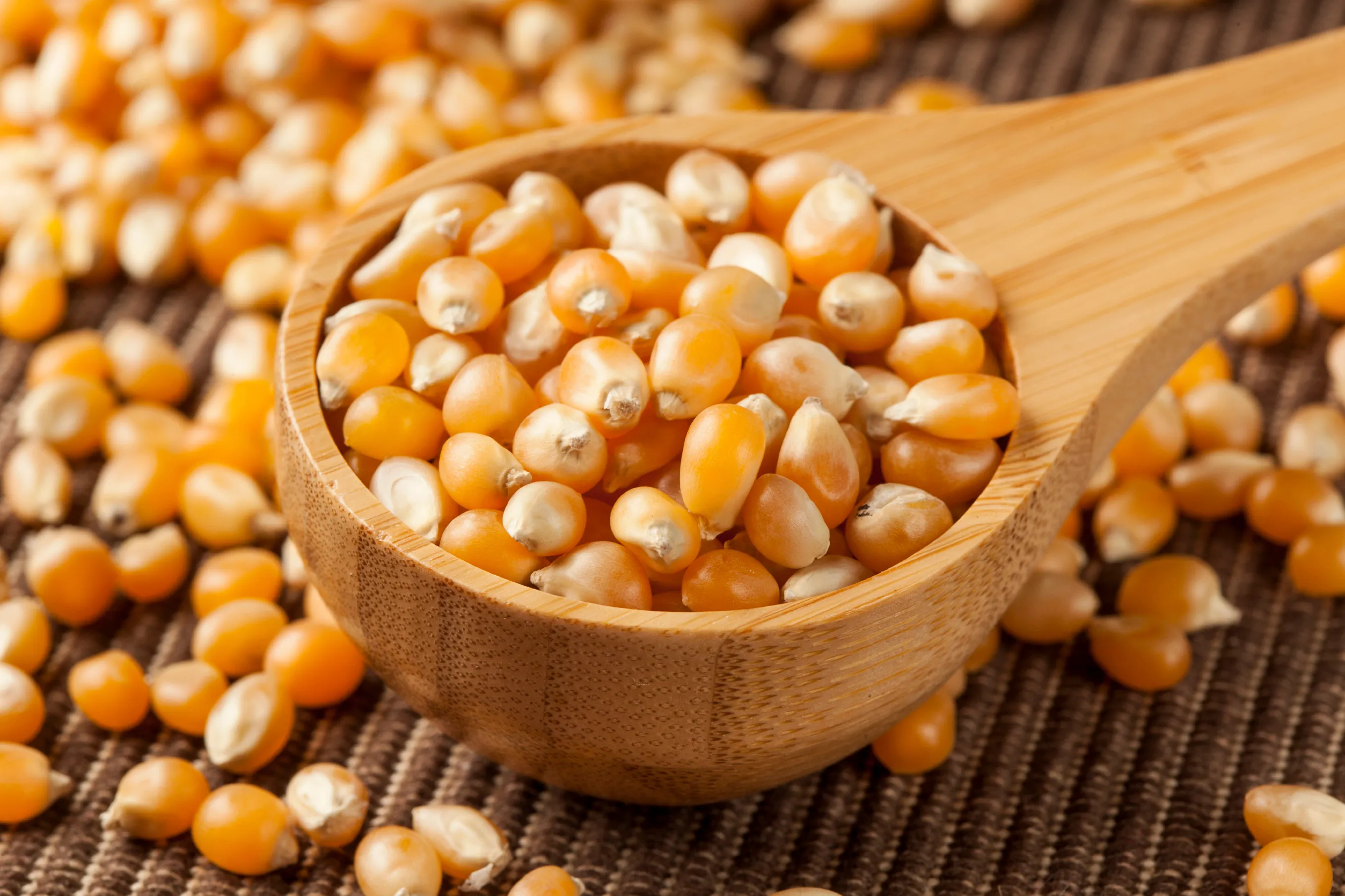Home>Types of Gardening>Edible Gardening>Where Is Rosemary From?


Edible Gardening
Where Is Rosemary From?
Modified: January 29, 2024
Discover where rosemary is from and how to incorporate it into your edible gardening. Learn the benefits and tips for growing this popular herb.
(Many of the links in this article redirect to a specific reviewed product. Your purchase of these products through affiliate links helps to generate commission for Chicagolandgardening.com, at no extra cost. Learn more)
Table of Contents
Introduction
Welcome to the fascinating world of edible gardening, where you can experience the joy of growing your own herbs, vegetables, and fruits. Among the many plants that thrive in a garden, rosemary stands out for its remarkable aroma, distinct flavor, and rich history. Whether you are an experienced gardener or just getting started, understanding the origins of rosemary can deepen your appreciation for this versatile herb.
Rosemary, scientifically known as Rosmarinus officinalis, is a perennial herb native to the Mediterranean region. It belongs to the Lamiaceae family, which includes other aromatic herbs like mint, basil, and thyme. The name “rosemary” is derived from the Latin words “ros” meaning dew and “marinus” meaning sea, which reflects its affinity for coastal habitats.
For centuries, rosemary has been valued not only for its culinary uses but also for its medicinal properties and symbolic meanings. Its vibrant green foliage, delicate flowers, and invigorating scent have earned it a special place in cultural traditions and folklore around the world. From ancient civilizations to modern gardens, rosemary continues to captivate and inspire.
In this article, we will embark on a journey to explore the origins of rosemary, delve into its historical significance, uncover its role in different culinary traditions, and delve into its various applications in traditional and alternative medicine. Whether you are curious about the folklore surrounding rosemary or seeking practical advice on how to grow and cultivate this herb in your own garden, this article will provide you with a comprehensive understanding of the beloved rosemary plant.
So, let’s dive in and discover the ancient origins, cultural significance, and practical uses of rosemary!
Exploring the Origins of Rosemary
The origins of rosemary can be traced back thousands of years to the sunny Mediterranean region. This aromatic herb is native to countries such as Greece, Italy, Spain, and Morocco, where it thrives in the dry, rocky terrain.
One theory suggests that rosemary was first discovered on the island of Crete, where it grew wild in abundance. From there, it spread across the Mediterranean and gained popularity in various cultures for its unique fragrance and therapeutic properties.
Ancient civilizations revered rosemary for its mystical qualities. The Egyptians used it in their funeral rituals to symbolize remembrance, while the Greeks associated it with Aphrodite, the goddess of love and beauty. In Roman mythology, rosemary was dedicated to the goddess Venus and was believed to enhance memory and mental clarity.
Even the ancient Greeks and Romans recognized the culinary value of rosemary. They used it as a flavorful herb to enhance the taste of their dishes, ranging from roasted meats to sauces and pastries.
As trade routes expanded during the Middle Ages, rosemary became known throughout Europe and gained popularity in various cuisines. It was also cultivated in monastery gardens for its culinary and medicinal uses. The herb was highly valued for its ability to add flavor to bland foods, preserve meats, and mask unpleasant odors in the home.
Today, rosemary is cultivated in many parts of the world, but it continues to thrive in its ancestral homeland of the Mediterranean. The perfect combination of warm, sunny days and well-drained soil allows it to flourish and develop its signature aroma and taste.
Whether you are growing rosemary in your backyard garden or enjoying its fragrance in essential oils or culinary dishes, taking a moment to appreciate its rich history and origins can deepen your connection to this beloved herb.
Historical Background of Rosemary
Rosemary has a long and storied history that spans across civilizations and continents. From ancient times until today, this herb has held significant cultural and symbolic meaning.
In ancient Egypt, rosemary was considered a sacred plant and was often used in religious ceremonies and funerary rites. Its aromatic scent was believed to purify the air and provide protection in the afterlife. Egyptians also used rosemary in cosmetics and perfumes.
The Greeks and Romans regarded rosemary as a symbol of remembrance and loyalty. It was often woven into wreaths and worn as garlands during special occasions and festivals. Students would wear rosemary sprigs while studying to improve memory and concentration.
During the Middle Ages, rosemary gained popularity as a medicinal herb in Europe. It was believed to have properties that could treat various ailments, including digestive issues and headaches. Rosemary was also used to ward off evil spirits and protect against the plague.
In addition to its medicinal uses, rosemary played a significant role in European folklore and superstitions. It was believed that placing rosemary under a pillow could ward off nightmares and promote restful sleep. Brides would carry rosemary sprigs in their bouquets as a symbol of love, fidelity, and prosperity.
The symbolism of rosemary extended to different cultures around the world. In some Native American tribes, rosemary leaves were burned as a purification ritual. In Medieval England, rosemary was associated with weddings and was often planted in bridal gardens. Even today, rosemary is commonly used in wedding ceremonies, symbolizing love, remembrance, and fidelity.
As the demand for herbs and spices grew during the Age of Exploration, rosemary found its way to new territories. The herb was introduced to the Americas by European colonizers and was soon embraced in South American and Caribbean cuisines.
Today, the historical significance of rosemary continues to be honored. It is cherished not only for its culinary uses but also for its symbolism, beauty, and versatile applications in various aspects of life. Exploring the historical background of rosemary allows us to appreciate the deep-rooted heritage of this extraordinary herb.
Rosemary in Mediterranean Cultures
In Mediterranean cultures, rosemary plays an integral role in culinary traditions, folklore, and daily life. The warm climate and rocky terrain of the region provide the perfect conditions for rosemary to thrive, making it a beloved herb among locals.
Greece, often referred to as the birthplace of Western civilization, has a deep appreciation for rosemary. In Greek cuisine, it is used to flavor a variety of dishes, including roasted meats, stews, and vegetable dishes. The Greeks also believe that rosemary brings good luck and protection, with many households planting rosemary bushes near their homes.
In Italy, rosemary is an essential ingredient in the cuisine of many regions. It is used to enhance the flavors of Italian classics such as roasted potatoes, grilled meats, and pasta sauces. Italian folklore associates rosemary with love and fidelity, and it is customary for couples to plant rosemary in their gardens as a symbol of their commitment.
Spain is known for its vibrant and flavorful cuisine, and rosemary is a key ingredient in many traditional Spanish dishes. From herb-infused olive oils to hearty stews and seafood marinades, rosemary adds a fragrant and earthy aroma to Spanish cooking. It is also believed that keeping a sprig of rosemary in your pocket can help improve memory and bring good luck.
Morocco, located in North Africa, also has a rich culinary heritage that incorporates rosemary. Traditional Moroccan cuisine often features aromatic spices and herbs, including rosemary, which adds depth and complexity to dishes like tagines and couscous. Moroccan culture also views rosemary as a symbol of remembrance and uses it in celebrations and religious ceremonies.
In addition to its culinary uses, rosemary has been utilized for its medicinal properties in Mediterranean cultures for centuries. It is believed to aid digestion, relieve headaches, boost the immune system, and improve cognitive function. Rosemary tea is a popular remedy for various ailments and is commonly consumed in Mediterranean households.
Exploring the role of rosemary in Mediterranean cultures not only highlights its culinary significance but also underscores its cultural and historical importance. From ancient times to the present day, this versatile herb continues to be cherished and embraced as a fundamental part of the Mediterranean way of life.
Rosemary in European Folklore and Medicine
In European folklore and medicine, rosemary holds a prominent place for its mystical properties and therapeutic benefits. This aromatic herb has been revered for centuries, and its presence can be found in various cultural traditions and remedies.
In medieval Europe, rosemary was associated with protection against evil spirits and negative energies. It was believed that hanging bundles of rosemary above doorways could purify and bless a home. Rosemary sprigs were also carried by individuals as a form of personal protection and to ward off illness.
Rosemary was believed to possess powerful healing properties and was commonly used in traditional European medicine. It was used to alleviate digestive disorders, improve circulation, and relieve muscle pain. Rosemary was often prepared as a tea or used topically as essential oil for its calming and invigorating effects.
One particularly interesting aspect of rosemary in European folklore is its connection to memory and remembrance. In Shakespeare’s play Hamlet, Ophelia refers to rosemary as a symbol of remembrance, saying, “There’s rosemary, that’s for remembrance.” This association with memory and mental clarity has been recognized since ancient times, and the herb was often used in rituals and ceremonies to enhance memory function.
Furthermore, rosemary was believed to have protective qualities during times of epidemics, such as the infamous Black Plague. Some people carried small bags of dried rosemary or wore rosemary garlands to protect themselves from the disease. The strong and distinct aroma of rosemary was thought to repel harmful germs and ward off illness.
In European folklore, rosemary was also associated with love and fidelity. It was customary for couples to wear rosemary sprigs or exchange rosemary tokens as a symbol of enduring love. Rosemary was believed to strengthen the bonds between lovers and ensure a long-lasting relationship.
The versatile and beneficial nature of rosemary made it a vital component in European folk medicine. It was revered not only for its physical healing properties but also for its ability to protect against spiritual forces and enhance emotional well-being. Even today, rosemary continues to be recognized for its numerous health benefits and is readily incorporated into herbal medicine practices.
Exploring the significance of rosemary in European folklore and medicine not only reveals the deep-rooted traditions surrounding this herb, but it also highlights the enduring belief in its remarkable properties. From protection against spiritual forces to physical healing, rosemary has left an indelible mark in European culture.
Rosemary in Culinary Applications
Rosemary is renowned for its exceptional flavor and aroma, making it a popular and versatile herb in culinary applications. Whether used as a fresh herb or dried, rosemary adds a delightful and distinct taste to a wide range of dishes.
One of the most common uses of rosemary in culinary traditions is in roasting and grilling. Sprigs of fresh rosemary are often tucked inside roasts or used as skewers for kabobs to infuse the meat with its aromatic essence. The robust flavor of rosemary pairs particularly well with lamb, beef, and poultry, giving them a delectable and savory taste.
Rosemary also adds depth and complexity to soups, stews, and sauces. The earthy and slightly pine-like flavor of the herb complements the rich flavors of hearty dishes, such as tomato-based sauces, bean soups, and vegetable medleys.
Another popular culinary application of rosemary is in bread and pastry recipes. The aromatic herb can be finely chopped and incorporated into bread dough for an exquisite flavor profile. Rosemary-infused olive oils and vinegars are also common, perfect for drizzling over salads or using as a marinade for grilled vegetables.
In Mediterranean cuisine, rosemary is a key ingredient in the herb blend known as “Herbes de Provence.” This blend typically includes rosemary, thyme, oregano, and other fragrant herbs, and is used to season a variety of dishes, such as roasted vegetables, grilled meats, and seafood.
Moreover, rosemary can be used to add a touch of elegance and flavor to beverages. Its leaves can be muddled and added to refreshing cocktails, such as a rosemary-infused gin and tonic or a rosemary lemonade.
When using rosemary in culinary applications, it is essential to use it sparingly, as its flavor can be quite potent. The leaves can be chopped finely or left whole and removed before serving, depending on the desired intensity of flavor. Additionally, dried rosemary can be used as a substitute for fresh rosemary, although fresh rosemary tends to provide a more vibrant and aromatic experience.
With its versatility and distinctive flavor profile, rosemary has become a staple herb in kitchens around the world. Whether used in traditional Mediterranean recipes or innovative culinary creations, rosemary adds an unforgettable touch to every dish it graces.
Rosemary in Traditional and Alternative Medicine
Throughout history, rosemary has been highly regarded for its therapeutic properties and has been utilized in traditional and alternative medicine practices. This aromatic herb is believed to possess a range of health benefits, making it a valuable addition to natural remedies.
Rosemary has long been associated with aiding digestion and alleviating digestive issues. It is believed to stimulate the production of digestive enzymes, promoting healthy digestion and relieving symptoms such as bloating and indigestion. Rosemary tea or infusions made from rosemary leaves are often consumed after meals to support proper digestion.
In addition to its digestive benefits, rosemary has been used as a natural remedy for headaches and migraines. The herb contains compounds that have been shown to inhibit the release of inflammatory substances, which may contribute to the alleviation of headache symptoms. Massaging diluted rosemary essential oil onto the temples or inhaling its aroma may provide relief from tension headaches.
The invigorating scent of rosemary has been associated with improving cognitive function and memory. In traditional medicine, it was believed that smelling rosemary would strengthen memory and enhance mental clarity. Recent studies have shown that certain compounds in rosemary may have neuroprotective properties, potentially supporting cognitive health and reducing the risk of age-related cognitive decline.
Rosemary has been used externally for its analgesic and anti-inflammatory properties. Applying diluted rosemary essential oil topically to sore muscles and joints may provide relief from pain and inflammation. The herb has also been used in traditional poultices and ointments for wound healing and to soothe skin irritations.
Moreover, rosemary is believed to possess antioxidant properties, helping to protect the body against oxidative stress and inflammation. Antioxidants play a crucial role in maintaining overall health and well-being by neutralizing free radicals that can cause cellular damage.
It is important to note that while rosemary has a long history of traditional use, it is always advisable to consult with a healthcare professional before using rosemary or any other herb for medicinal purposes. They can provide appropriate guidance based on individual health conditions and potential interactions with medications.
As interest in natural remedies and alternative medicine grows, rosemary continues to play a significant role in supporting wellness. Whether used in traditional preparations, as essential oils, or consumed as herbal infusions, this versatile herb has earned its place among the natural healing agents.
Modern Uses and Cultivation of Rosemary
In modern times, rosemary continues to be valued for its culinary uses, therapeutic benefits, and ornamental appeal. With its versatility and adaptability, rosemary is a cherished herb in gardens and kitchens around the world.
One of the most common uses of rosemary today is in cooking. Its distinct flavor and aroma make it a prized herb in various cuisines. Rosemary can be used to add depth and complexity to soups, stews, sauces, roasted vegetables, and grilled meats. It is also a popular ingredient in herb blends, such as Herbes de Provence, and is often used to infuse oils and vinegars.
Rosemary is also appreciated for its medicinal properties and is used in numerous natural remedies. Its essential oil is often included in aromatherapy blends for its invigorating and uplifting effects. Diluted rosemary oil can be massaged onto the skin to alleviate muscle pain and stiffness. Additionally, rosemary tea is consumed for its digestive benefits and potential cognitive-enhancing properties.
In recent years, the demand for organic and homegrown produce has led to an increase in the cultivation of rosemary in home gardens and community plots. Rosemary is a hardy perennial herb that is relatively easy to grow. It thrives in well-drained soil, abundant sunlight, and warm climates, making it an ideal choice for regions with Mediterranean-like conditions. With regular pruning, rosemary bushes can be kept compact and bushy, making them suitable for container gardening as well.
Aside from its culinary and medicinal uses, rosemary is also appreciated for its ornamental value. Its fragrant foliage and delicate flowers add beauty and visual interest to gardens and landscapes. Rosemary can be pruned into different shapes, such as hedges or topiaries, adding an element of design to outdoor spaces. Its evergreen nature ensures that it remains attractive throughout the year.
Furthermore, rosemary has gained popularity in the realm of natural cosmetics and skincare. Its essential oil is often incorporated into beauty products, such as soaps, shampoos, and lotions, due to its refreshing scent and potential benefits for the skin and hair.
Overall, rosemary has found its place in modern kitchens, gardens, and wellness practices. Its versatility, adaptability, and numerous uses have made it a beloved herb for both culinary and non-culinary purposes. Whether grown in a backyard garden or purchased from local markets, rosemary continues to captivate with its aromatic presence and valuable contributions to modern lifestyles.
Conclusion
Rosemary, with its rich history, distinctive flavor, and versatile applications, captivates both gardeners and enthusiasts of edible plants. From its origins in the Mediterranean region to its pervasive presence in various cultures and traditions, rosemary has stood the test of time as a beloved herb.
Through the centuries, rosemary has played a significant role in culinary traditions, imparting its unique flavor to an array of dishes. Its aromatic presence in roasts, stews, breads, and beverages has delighted palates and enhanced the overall dining experience.
Beyond its culinary uses, rosemary has been revered for its therapeutic properties in traditional and alternative medicine. Whether consumed as herbal tea, inhaled as essential oil, or applied topically, rosemary has been associated with digestive health, pain relief, cognitive function, and overall well-being.
The cultivation of rosemary has found a home in modern gardens, where its hardiness, adaptability, and ornamental value add beauty and fragrance to any landscape. In both home and professional kitchens, rosemary continues to be a staple herb, enhancing the flavors of countless dishes and inspiring culinary creativity.
As awareness of the benefits of natural remedies and organic gardening grows, rosemary remains a popular choice for those seeking to embrace holistic wellness and sustainable practices. Its enduring appeal lies not only in its sensory delights but also in its long-standing cultural and historical significance.
Whether you are an experienced gardener, a culinary enthusiast, or someone curious about the wonders of nature, integrating rosemary into your life can bring a sense of connection to the past and a deep appreciation for the wonders of the natural world.
So, go ahead and embark on your own edible gardening journey. Let rosemary be your guide as you explore its origins, savor its flavors, and uncover its healing potential. Embrace the joy and satisfaction of growing your own herbs, and allow rosemary to add a touch of magic to your garden and culinary endeavors.






